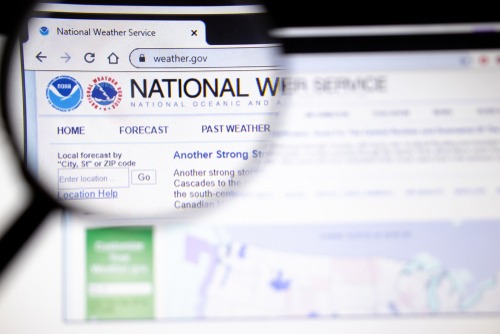
With the U.S. Senate voting unanimously last week to pass the National Oceanic and Atmospheric Administration (NOAA) Weather Radio Modernization Act (S.1416) and the National Weather Service Communications Improvement Act (S.1414), the House holds the future of the nation’s weather radio network in its hands.
The bills were introduced by U.S. Sens. Maria Cantwell (D-WA), chair of the Commerce Committee, and Ted Cruz (R-TX), ranking member of the committee.
“Gaps in weather radio coverage keep communities in the dark about incoming weather hazards, that’s why I’m proud that these two bipartisan bills that passed the Senate would finally upgrade the National Weather Service warning technology, expand radio alert coverage in rural and tribal communities, and repair weather radio stations across the country, including 17 stations in the State of Washington,” Cantwell said. “The threat from weather events is only increasing, especially with El Nino bringing atmospheric rivers and winter storms this season, so access to reliable, real-time alerts are more important than ever to keep their families safe and homes secure.”
Radio service is supposed to be an ultimate failsafe – a means of providing communication across the country even if severe storms take out all other communications systems. It functions both as an early warning system and critical information delivery network during disasters.
With this in mind, the NOAA Weather Radio Modernization Act would demand updates to old weather radio technology, expand coverage into rural areas, increase National Weather Radio coverage to approximately 98-99 percent of the U.S. population and update the system’s infrastructure to reduce reliance on copper wire transmissions. Copper, notably, is heavily susceptible to severe temperature and weather changes.
On the other hand, the National Weather Service Communications Improvement Act would improve the National Weather Service’s internal instant messaging system and force through a modern cloud-based system to support faster service and appeal to more users.
The NOAA presides over a network of more than 1,000 transmitters across U.S. states, coastal waters and territories, to provide warnings, watches and forecasts. However, the NOAA noted that more than 400 will need to be replaced in the next five years. This comes as weather and climate change induced disasters continue accelerating. The United States experienced 25 such disasters this year alone.




